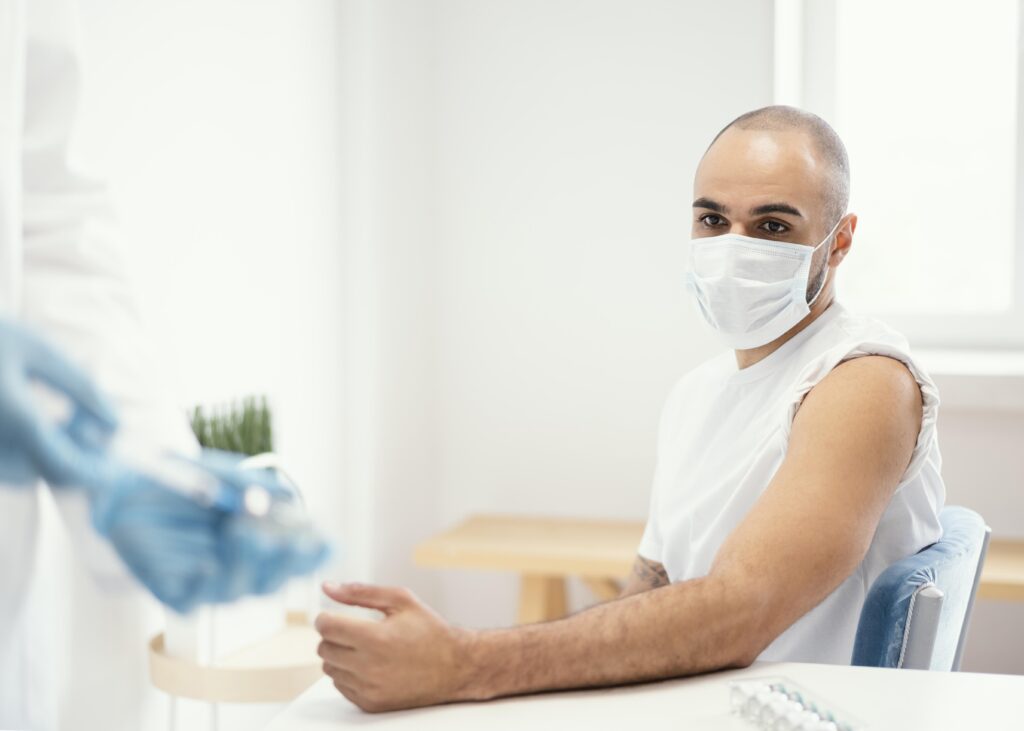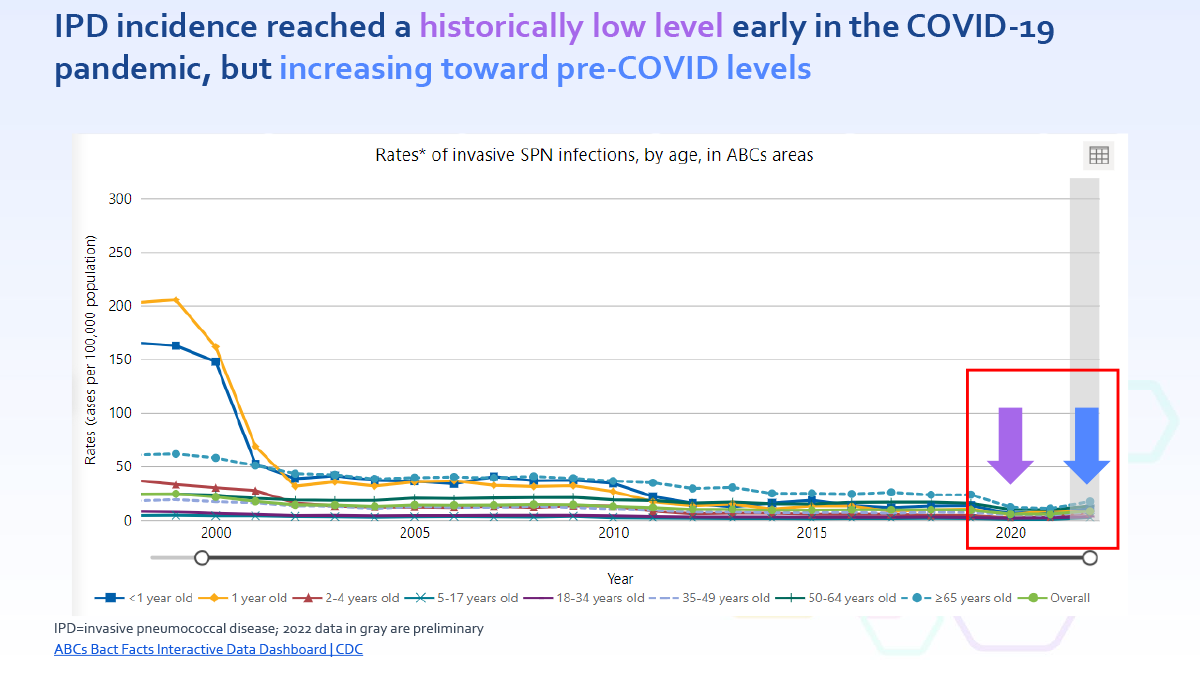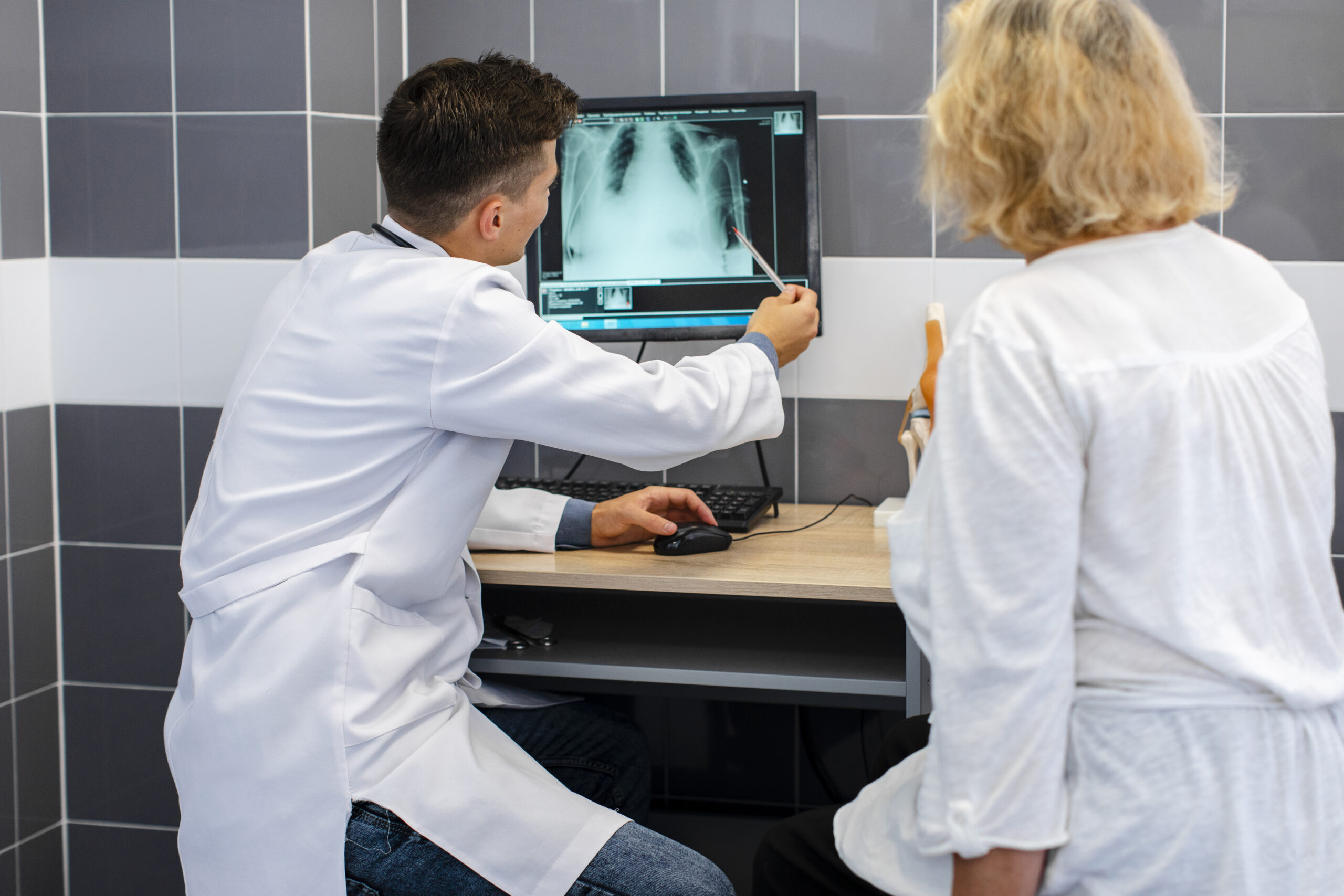I want to expand your knowledge on pneumonia vaccines.
Right off the bat, I’ll teach you that “pneumonia shot” is actually the wrong terminology.
Pneumonia is an infection of the lung. That’s bad, and we’d love to stop that. But, we can mostly manage that outside of the hospital with our powerful antibiotics.
What we’re REALLY trying to stop is a specific bacteria that causes pneumonia (a lung infection) that then invades the rest of your body, resulting in Invasive Pneumococcal Disease (IPD).
The “pneumonia shot” does help prevent some pneumonia. Like with most vaccines, stopping you from getting sick is great, but it’s not the main objective. Our goal with the “pneumonia shot” is to keep you out of the hospital (and, ultimately, on this side of the grass). We do that by preventing IPD.
You can say pneumonia shot. You’re not lecturing at Harvard and we know what you mean. But, it’s technically a pneumococcal vaccine.
In This Article:
Pneumococcal Facts
- There are 100 different variations of the bacteria that causes pneumococcal disease
- About 23 of them are responsible for 80-90% of the problem
- 40% of those strains are resistant to bacteria (this is why vaccination is crucial! Prevent >>> treat)
- S. pneumo colonizes the upper respiratory tract. Unlike many diseases where we “catch” them, get sick, get over it, and it’s gone, Pneumo can hang with you for years!
- It’s transmitted via droplets. Meaning someone coughs directly on/near you and you breathe the booger droplets in. COVID, on the contrary, is an aerosol. It’s suspended in the air, basically, which means you just have to be in the same room as an infected person to catch it.
As with everything, some people are at higher risk of IPD:
- Cancer sufferers and immune suppressed folks have the highest risk
- Lung disease sufferers (asthma, smokers, COPD)
- People with liver disease
- Diabetes
- Those with other common comorbidities (high blood pressure, obesity, etc)

Pneumococcal Vaccines Have Changed
Pneumococcal vaccine technology recently updated to what are called “conjugate” vaccines (PCV – pneumococcal conjugate vaccines). The change offers stronger protection, so folks who were immunized with “old” pneumonia need the “new” pneumonia (nyuk nyuk).
This new PCV technology has improved a bunch in recent years too, allowing for more and more coverage of those problematic pneumococcal variations. PCV13 gave way to PCV15 which was replaced by PCV20, and now PCV21 is official. And we have more and more strains being added, which is great!
The latest and greatest is Capvaxive, which is PCV21. We are fully transitioned to this variation, so this is the default vaccine people get as of this writing.
People who have received ANY doses of past pneumococcal vaccines do not need to panic! You are covered. We can help you determine if or when you need an update.
Learn More: You Can be Holistic and Advocate for Vaccines
Who Gets Pneumococcal Vaccines?
| Pneumococcal vaccine recommendations were age-based (65+) and risk based (18-64 with those conditions above). Recently the age-based recommendation was dropped to 50+! That was a really big deal that highlights the severity of IPD and how younger and younger people are at risk. IMPORTANT FACT: Only about 22% of people with risk are up-to-date with pneumococcal vaccines! |
So, we see there’s a BIG gap we need to close:
- The folks 50-64 who are generally healthy need to understand how serious IPD is, and vaccinate
- Folks 65+ that missed the bus previously need to get it done if they haven’t
- Folks who have received “old” pneumonia shots need “new” pneumonia shots
- Anyone who is 18+ that has those risks, especially immunosuppressed people, NEED TO VACCINATE
Vaccines Work
Here’s a cool slide to show just how great vaccines are. Pay attention to just the lines for now.

Learn More: Vaccines do work, but they’re not perfect
Before the vaccines, the incidence was quite high. Especially in young kids (yellow and blue lines). Vaccines are introduced and take a big whack at the rates.
Over time, it gets smaller and smaller, usually directly after newer vaccines come out.
So, it’s a bummer to get revaccinated after time with newer and newer pneumococcal vaccines, but we really only do that to give you newer and better technology and “boost” you up, buttercup.
What to do Right Now
Here’s what you should do:
- Over 50: contact us (you can email us), and we can assess your pneumococcal vaccine status to determine if you need a new dose or not!
- 18-50: Contact us to determine if you are at risk for IPD and should be vaccinated
- Walk ins welcome Monday-Saturday from 9:30-5:30 to get vaccinated!
